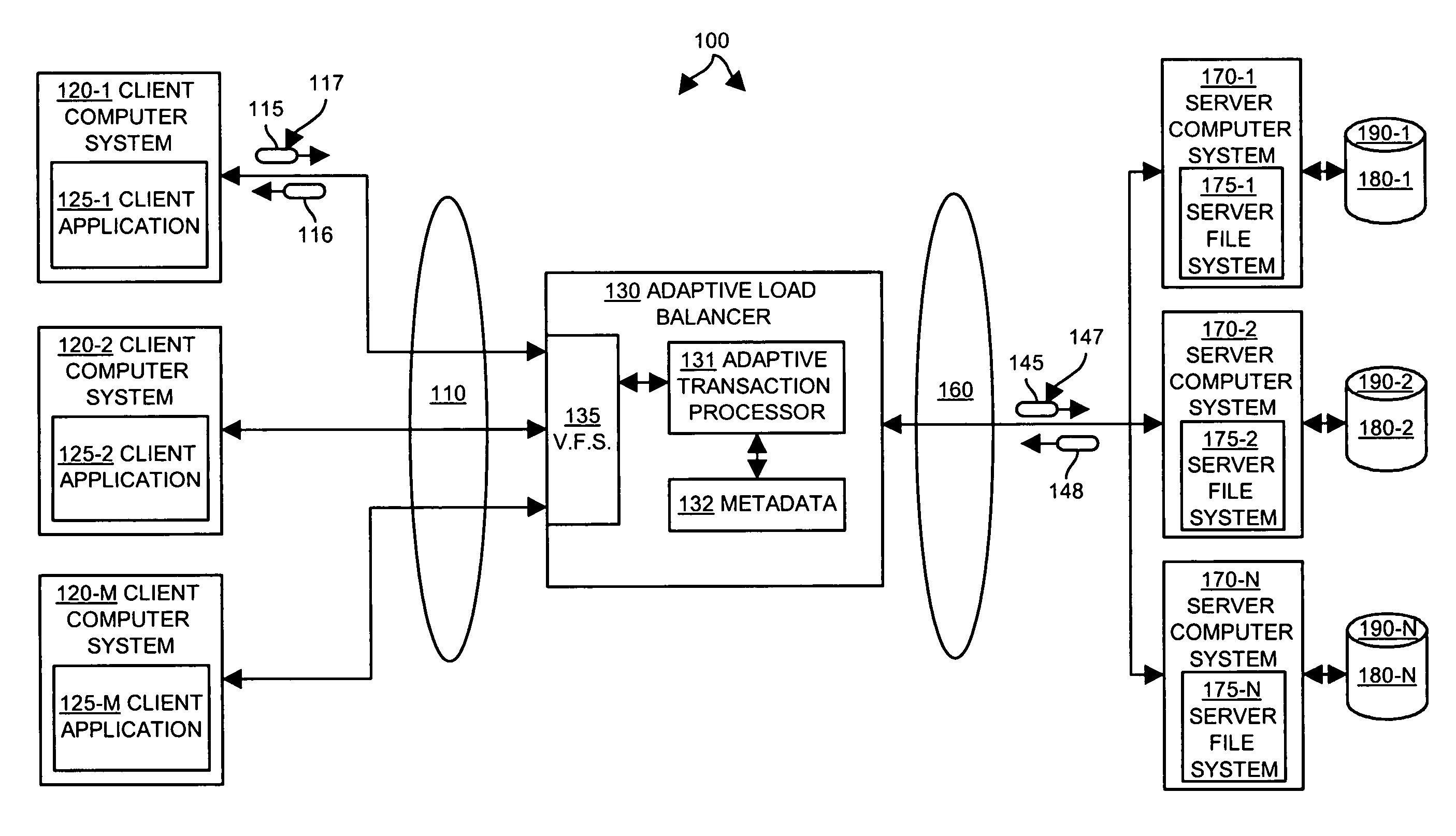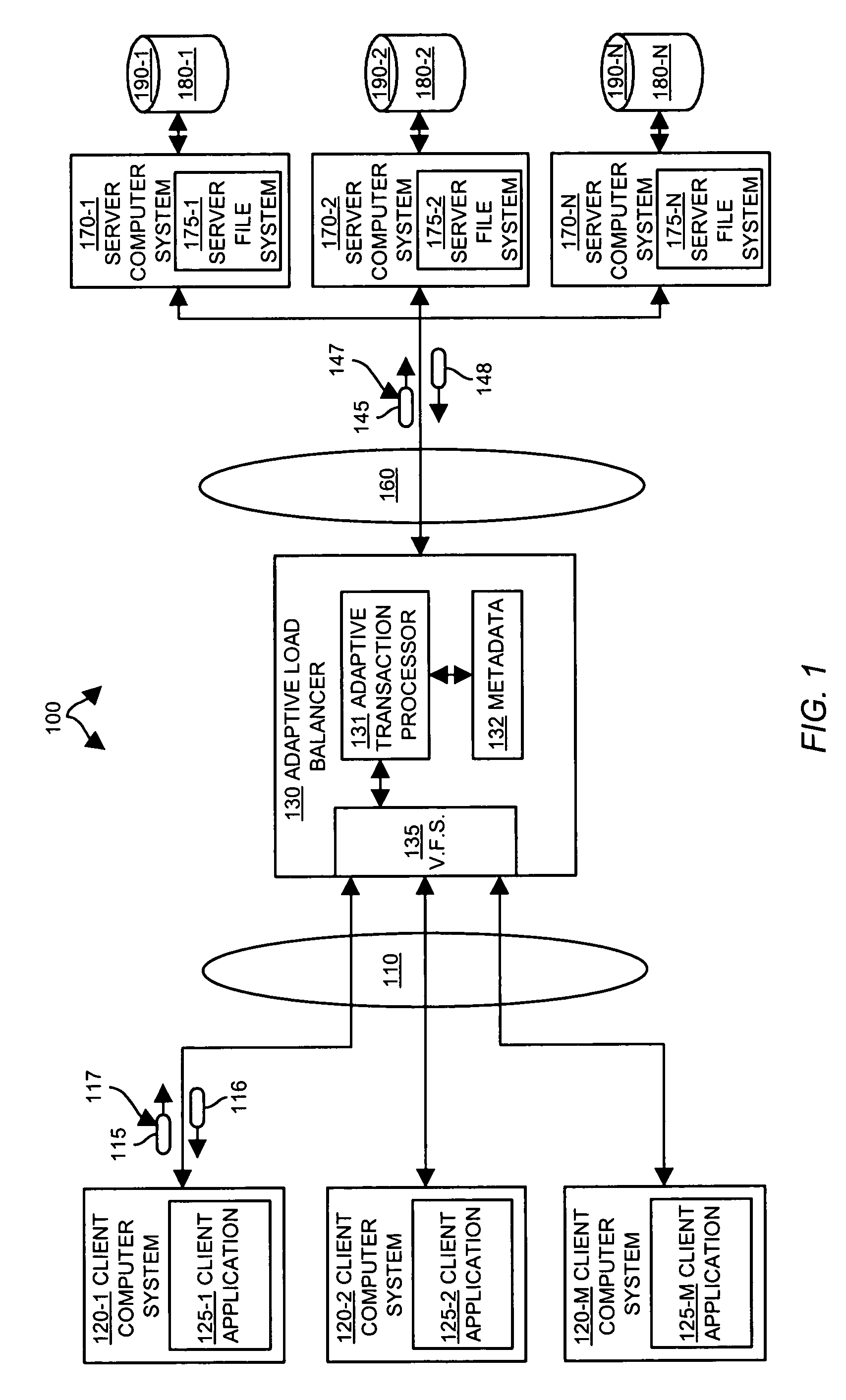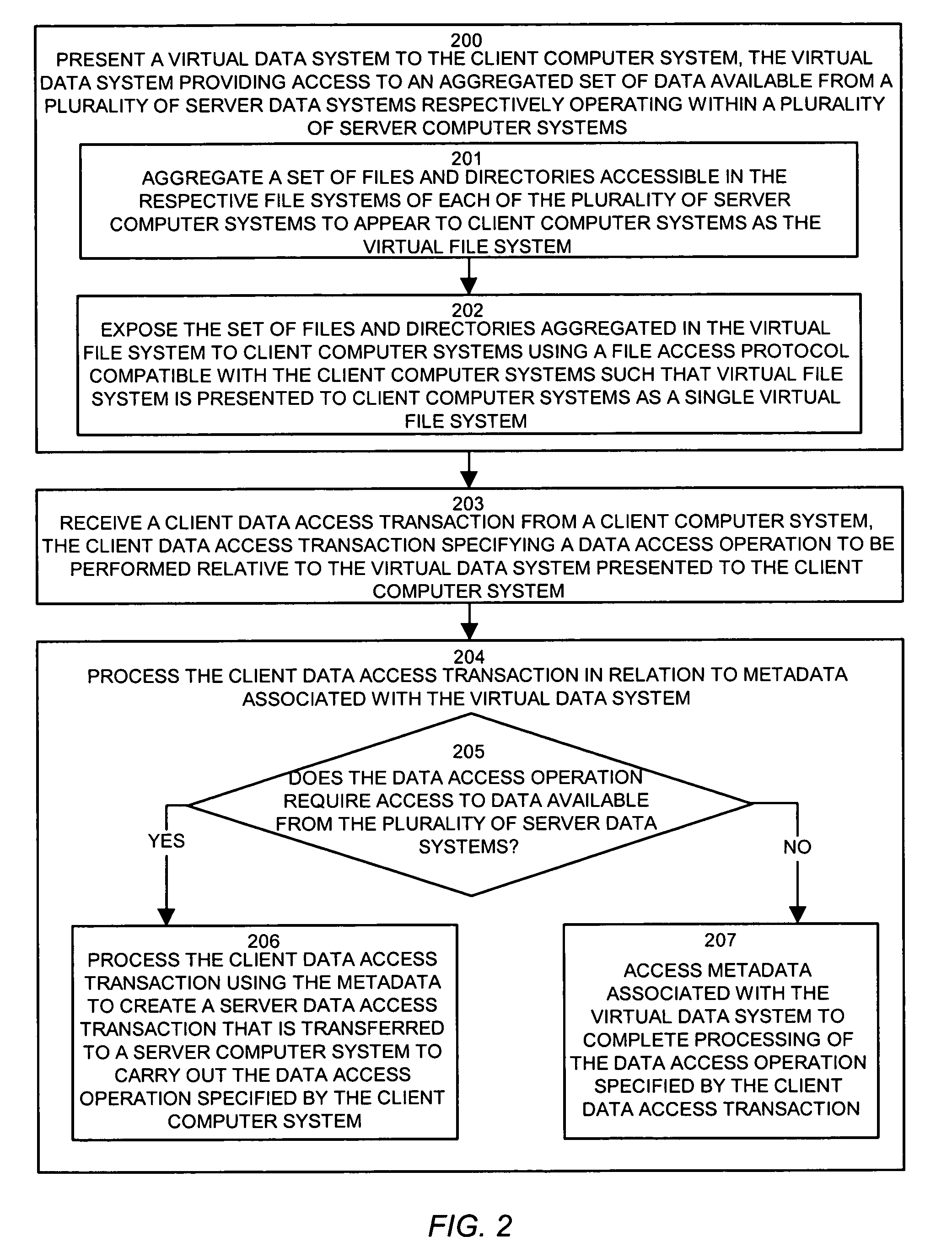Method and apparatus for adaptive services networking
a technology of adaptive services and networking, applied in the direction of digital data information retrieval, transmission, instruments, etc., can solve the problems of inefficient use of server storage space and processing resources, inability to meet the needs of human management and involvement, and the implementation of content aware load balancing still requires significant human management and involvement. , to achieve the effect of increasing access demand, reducing such demand, and increasing processing load
- Summary
- Abstract
- Description
- Claims
- Application Information
AI Technical Summary
Benefits of technology
Problems solved by technology
Method used
Image
Examples
example directory
Location Mapping Table
[0073]In the above example directory location mapping table, left-hand column labeled Parent Virtual File Handle (SFH) contains example file handles (expressed here as directory names) of directories that the adaptive load balancer 130 presents to the client computer systems 120 via a data access protocol such as NFS or CIFS (e.g., via exporting the “ / home” directory as a mount point). The middle column contains Lookup File Handles (LFH) that specify a target directory for which a file handle is to be obtained. The file handles in the LFH column thus contain the target names of files and / or sub-directories within the parent or source directory specified by the SFH (Column 1). The corresponding (i.e., resulting) file handles of each LFH are provided in the right-hand column labeled Child Virtual File Handles (VFH).
[0074]The above example Directory Location Mapping Table corresponds to an NFS or CIFS file system directory tree structure presented by the virtual f...
example active transaction table
[0086]According to the operation of data access protocols such as NFS and CIFS, each data access operation 117 submitted and being serviced by the adaptive transaction processor 131 has an associated transaction identification. Accordingly, each client data access transaction 115 has as associated client transaction identification CT-Y, where Y in the table above represents a variable or number identifier for a currently active NFS transaction. By currently active, what is meant is an NFS data access operation 117 that is being serviced by the adaptive load balancer 130 and that is not yet complete. The adaptive transaction processor 131 maintains information within the active transaction table along with an identity of the client that submitted the transaction 115 to the adaptive load balancer 130. One purpose of the active transaction table is to quickly provide a return mapping of server transaction responses 148 for forwarding to the appropriate client computer system that origi...
PUM
 Login to View More
Login to View More Abstract
Description
Claims
Application Information
 Login to View More
Login to View More - R&D
- Intellectual Property
- Life Sciences
- Materials
- Tech Scout
- Unparalleled Data Quality
- Higher Quality Content
- 60% Fewer Hallucinations
Browse by: Latest US Patents, China's latest patents, Technical Efficacy Thesaurus, Application Domain, Technology Topic, Popular Technical Reports.
© 2025 PatSnap. All rights reserved.Legal|Privacy policy|Modern Slavery Act Transparency Statement|Sitemap|About US| Contact US: help@patsnap.com



